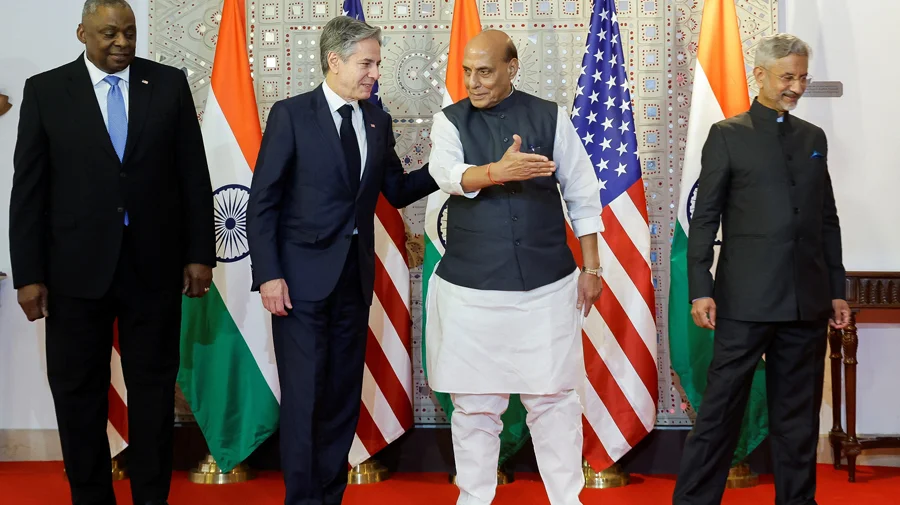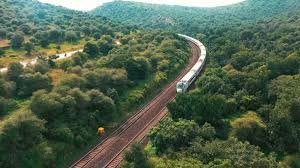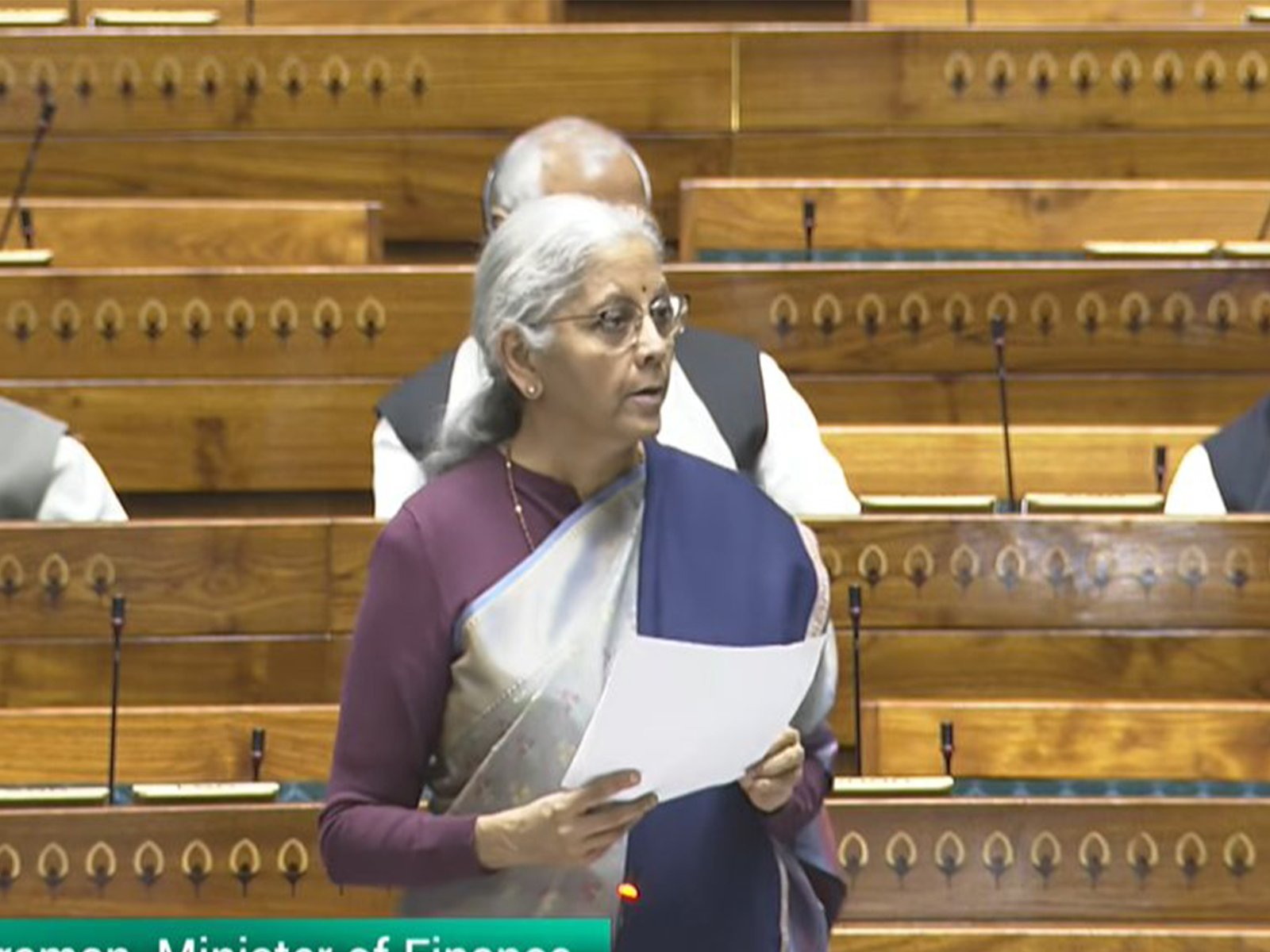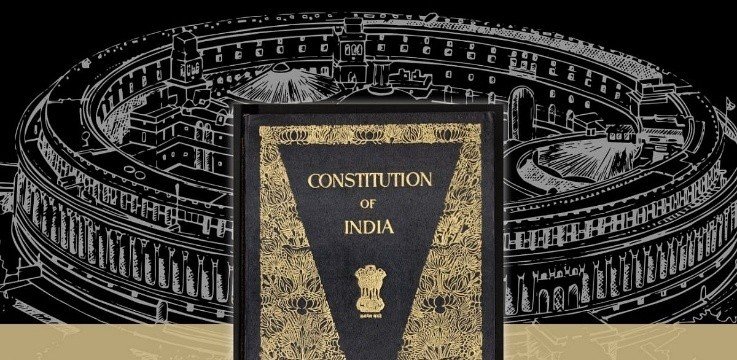Why in the News?
- India faces a rapidly shifting global environment marked by unpredictable great-power behaviour, new regional alignments and recurring neighbourhood crises.
- These changes expose gaps in India’s diplomatic practice and call for a faster, more flexible foreign-policy approach to protect national interests.
Key Highlights
- Global context: new uncertainty and multipolarity
- The post-Cold War order is fragmenting. Great powers act more unpredictably and multilateral institutions face strain.
- This era demands agile diplomacy: quicker responses, pragmatic partnerships and the ability to manage concurrent crises without relying on old templates.
| What are the “old templates” of Indian diplomacy? By “old templates” we mean the traditional ways India’s diplomats have worked (habits and rules learned in earlier decades). These include: 1. Long-term, cautious diplomacy: Decisions took time, with careful consensus-building and long diplomatic processes. This worked when things moved slowly. 2. Heavy faith in multilateral institutions: Belief that global bodies (UN, NAM earlier) would solve big problems through rules and meetings. 3. Non-alignment and moral voice: India often relied on a moral leadership role (non-alignment, Third World solidarity) rather than quick power politics. 4. Centralised, protocol-driven foreign office: Big reliance on senior civil servants and formal channels; slower field-level action. 5. Limited use of economic statecraft: Trade and fast investment diplomacy were not always used as tools of influence. Why these templates now fall short: the world now needs quick responses, flexible partnerships, and more direct economic and technological engagement. Slow, rule-bound diplomacy often misses fast-moving opportunities or crises. |
- United States: reduced predictability
- The U.S., once the anchor of multilateral coordination, now shows episodic and transactional diplomacy.
- Such unpredictability forces India to hedge its foreign policy; keeping ties with Washington strong while preparing alternatives if U.S. support shifts on key issues.
- West Asia: multiple new actors and shifting influence
- West Asia’s diplomacy is now led by a wider set of players. Regional states and external powers brokered deals and shaped outcomes.
- India must engage more proactively with Gulf states, Egypt, Turkey and others to protect energy, diaspora and trade interests.
- Quiet absence from major regional settlement tables lowers India’s influence.
- Pakistan and Afghanistan: persistent security threats
- The instability across Afghanistan and Pakistan continues to pose direct security risks.
- Cross-border militancy, politico-military shifts in Islamabad and competition for influence make India’s north-west frontier sensitive.
- India needs a mix of security preparedness and regional diplomacy to reduce spillovers.
- Neighbourhood (Nepal, Bangladesh, Sri Lanka): influence under pressure
- India’s immediate neighbours are vital for its security and connectivity. However, frequent political changes and rising local nationalism make relations unpredictable.
- Nepal: The recent youth-led “Gen Z” protests in Nepal showed India’s reduced ability to shape outcomes in its closest neighbour. Earlier, the 2015 blockade episode had already created resentment, allowing China to step in with major infrastructure and trade projects.
- Bangladesh: Relations have been strong due to cooperation on energy and security, but issues like river water sharing (Teesta) and perceptions of India’s interference are creating mistrust. Meanwhile, China’s Belt and Road projects in Bangladesh are expanding influence.
- Sri Lanka: India helped during the 2022 financial crisis by providing aid and credit lines, but China’s long-term economic footprint such as Hambantota Port and major investments gives it strategic depth.
- Together, these examples show how India’s slow or cautious diplomacy risks losing space to other powers. A quicker, more responsive neighbourhood policy is needed to regain influence.
- China: complex competitor with expanding reach
- China uses a mix of diplomacy, economy, and strategy to increase its power in Asia and beyond. It often promotes cooperation in trade and global platforms (like BRICS and SCO) while continuing to assert its claims along the border with India.
- Border tensions remain unresolved, especially after incidents like the 2020 Galwan Valley clash. Despite talks, Chinese troops continue to build infrastructure near the Line of Actual Control (LAC), creating long-term security challenges for India.
- Beyond military pressure, China is expanding soft power by investing in South Asian countries (like Pakistan’s CPEC, Nepal’s infrastructure, and Sri Lanka’s ports), offering scholarships, and building strong digital and tech networks.
- This approach allows China to shape public opinion and gain strategic access in India’s neighbourhood.
Key Terms
- Strategic Autonomy
- The ability of a country to make independent foreign-policy choices without being overly constrained by another power. It requires diversified partnerships, economic resilience and credible defence capabilities.
- Soft Power
- Influence achieved through attraction — culture, values, development assistance and diplomacy — rather than coercion. Soft power complements hard instruments like the military and sanctions.
- Confidence-Building Measures (CBMs)
- Practical steps (hotlines, military protocols, joint exercises, information sharing) that reduce mistrust and prevent accidental escalation between states.
- Neighbourhood Diplomacy
- Focused engagement with immediate neighbouring countries using trade, connectivity, development projects and cultural ties to build stable, cooperative relations.
- Great-Power Competition
- The strategic rivalry among major powers (e.g., U.S. and China) that reshapes alliances, trade patterns and security dynamics. Middle powers must navigate this competition to safeguard their interests.
Implications for India
- Diplomatic marginalisation risk: Slow or symbolic responses may leave India out of critical regional deals and reduce its bargaining power.
- Strategic vulnerability: Instability in neighbours and contested borders can translate into direct security and economic costs.
- Economic opportunity cost: Weak engagement may limit access to regional markets, investments and connectivity projects.
- Increased strategic competition: China’s deeper regional footprint and new alignments (e.g., defence pacts among other states) complicate India’s strategic options.
- Need for institutional renewal: India must modernise its diplomatic corps, intelligence coordination and policy planning to operate in a fast-changing international environment.
Challenges and Way Forward
| Challenge | Way Forward (practical measures) |
| Rigid diplomatic practices | Reform foreign service training; recruit specialists in economics, technology and regional languages; set up fast-response desks. |
| Low influence in key regional processes | Pursue proactive diplomacy: early engagement, offer mediation/support, and provide development incentives tied to regional priorities. |
| Neighbourhood volatility | Expand development assistance, infrastructure ties and people-to-people programmes; increase high-level visits to reassure partners. |
| Border friction with China | Maintain robust deterrence, institutionalise military-to-military dialogue, and pursue parallel diplomatic and economic engagement. |
| Overdependence on single partners | Diversify partnerships (e.g., Southeast Asia, Africa, Europe), deepen strategic ties with like-minded democracies while keeping open channels with others. |
Conclusion
India’s growing economic strength must be matched by a modern, nimble foreign policy. Success requires a blend of readiness and outreach: stronger border preparedness, faster diplomatic responses, deeper neighbourhood engagement, and diversified global partnerships. Adapting institutions and capabilities now will protect India’s strategic space as the international order evolves.
| EnsureIAS Mains Question Q. Examine why India needs to modernise its foreign policy in response to changing global realities. Discuss concrete institutional and strategic reforms that would make Indian diplomacy more effective. (250 Words) |
| EnsureIAS Prelims Question Q. Consider the following statements about India’s foreign policy challenges: 1. Diversifying strategic partnerships reduces the risk of overdependence on any single power. 2. Strengthening people-to-people ties and development assistance are part of soft-power tools to manage neighbourhood volatility. 3. Military preparedness alone is sufficient to manage prolonged border frictions with a neighbouring great power. Which of the statements given above are correct? Answer: A. 1 and 2 only Explanation: Statement 1 is Correct: Diversifying strategic partnerships spreads diplomatic and economic risk, giving India multiple sources of technology, markets and security guarantees. It increases strategic autonomy and bargaining power by avoiding single-point dependencies that adversaries or shifting policies could exploit. Statement 2 is Correct: Soft power instruments — scholarships, cultural exchanges, infrastructure assistance, trade ties — build trust and influence. In the neighbourhood, these tools reduce grievances, produce goodwill and make countries less likely to pivot to rival powers, thereby lowering the chance of instability or hostile alignment. Statement 3 is Incorrect: Military preparedness is necessary but not sufficient. Long-term border management requires diplomacy, confidence-building measures, economic engagement, legal agreements and institutional mechanisms. A purely military approach risks escalation and does not address the political and economic drivers of prolonged frictions. |
Also Read | |
| UPSC Foundation Course | UPSC Daily Current Affairs |
| UPSC Monthly Magazine | CSAT Foundation Course |
| Free MCQs for UPSC Prelims | UPSC Test Series |
| ENSURE IAS NOTES | Our Booklist |





